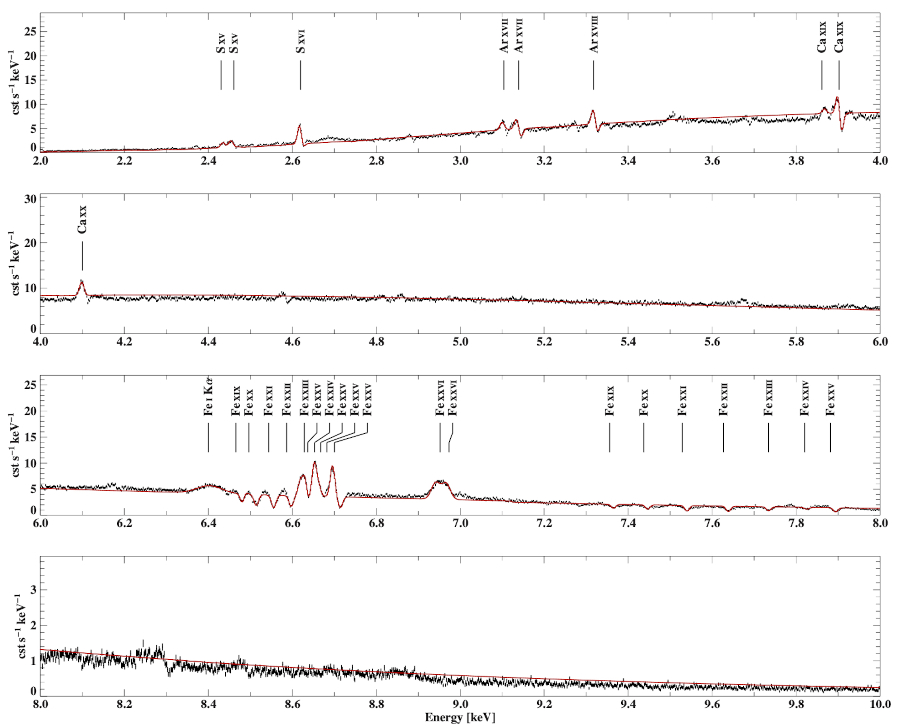
 Credit: The XRISM Collaboration
Credit: The XRISM Collaboration
Resolving a Dead and Dying Star
High mass X-ray binaries started out as two gravitationally-bound stars, with masses exceeding 10 times the mass of our Sun, revolving around each other. These stars lose mass from stellar winds driven from their surface by the extreme power of their radiation. They can exchange mass with each other too. As a result of the complicated ways the two stars can interact, it's difficult to predict how the binary will change with time, though eventually one of the stars will burn up all the fuel in its core, and catastrophically collapse, triggering a core-collapse supernova explosion. The collapsed core of the dead star can form either a neutron star or black hole, and in some cases, it can remain in orbit around its companion. The compact object (neutron star or black hole) will inevitably accrete matter from its companion, and as the material falls towards the compact object, it generates high-energy X-ray radiation. One of the most interesting of the known high-mass X-ray binary systems is Cygnus X-3. Cygnus X-3 is a very bright X-ray source composed of some type of compact object (probably a neutron star) and an evolved star, taking less than 5 hours to orbit each other. The evolved star is called a "Wolf-Rayet" star by scientists, and is characterized by a strong stellar wind, a wind so thick that the star itself cannnot be viewed through it. To make matters worse, Cygnus X-3 also lies behind a thick interstellar cloud which further obscures it from view of earth-bound astronomers.
It is an object of intense interest and curiousity, since it is the only system of this type known in our galaxy. As the wind falls onto the compact object, it produces strong, penetrating X-ray emission which can penetrate the wind and the cloud, providing one of the few ways the system can be studied. Now scientists have a new tool to probe the system: the Resolve spectrometer on the XRISM X-ray observatory. Resolve provides extremely high resolution spectra, meaning that it can make extraordinarily detailed studies of the atomic fingerprints of the material producing or absorbing the X-ray emission. The Resolve spectrum of Cygnus X-3 is shown above, with emission lines of sulfur, argon, calcium and iron, in a complex of emitting and absorbing features. The line shapes, how wide they are, and whether they are seen in emission or absorption provide unique information about the state of the emitting gas and how strongly the winds blow from the binary.
Published: November 4, 2024
<
HEA Dictionary ● Archive
● Search HEAPOW
● Other Languages
● HEAPOW on Facebook
● Download all Images
● Education ● HEAD
>
Each week the HEASARC
brings you new, exciting and beautiful images from X-ray and Gamma ray
astronomy. Check back each week and be sure to check out the HEAPOW archive!
Page Author: Dr. Michael F. Corcoran
Last modified Monday, 11-Nov-2024 18:19:53 EST


